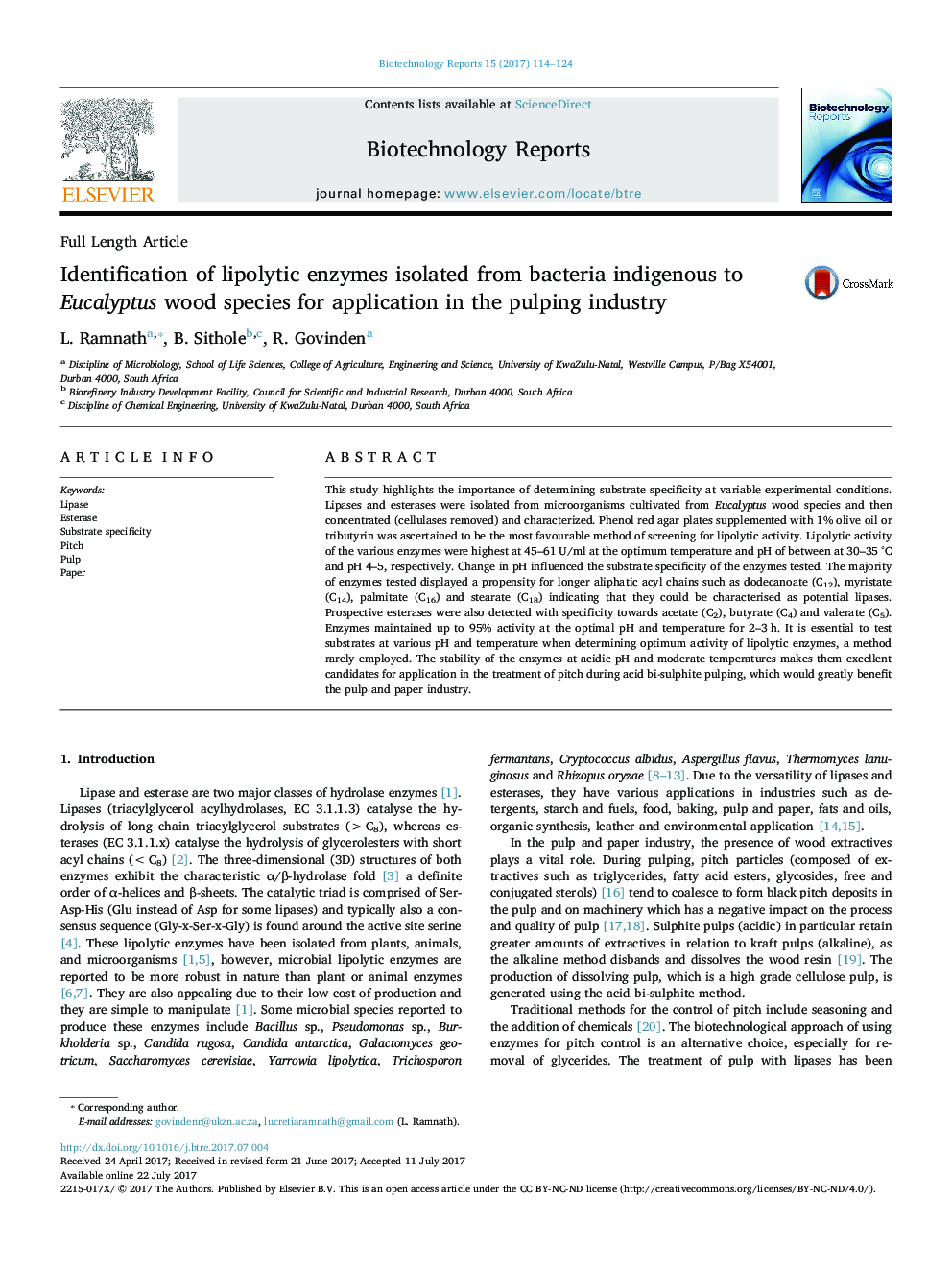| Article ID | Journal | Published Year | Pages | File Type |
|---|---|---|---|---|
| 5031774 | Biotechnology Reports | 2017 | 11 Pages |
â¢Phenol red screening plates is the best method for detecting lipolytic activity.â¢Substrate specificity is affected by temperature and pH.â¢Essential to test substrates at various pH and temperature to determine optima.â¢Lipolytic enzymes indigenous to Eucalyptus sp. can assist in pitch control.
This study highlights the importance of determining substrate specificity at variable experimental conditions. Lipases and esterases were isolated from microorganisms cultivated from Eucalyptus wood species and then concentrated (cellulases removed) and characterized. Phenol red agar plates supplemented with 1% olive oil or tributyrin was ascertained to be the most favourable method of screening for lipolytic activity. Lipolytic activity of the various enzymes were highest at 45-61 U/ml at the optimum temperature and pH of between at 30-35 °C and pH 4-5, respectively. Change in pH influenced the substrate specificity of the enzymes tested. The majority of enzymes tested displayed a propensity for longer aliphatic acyl chains such as dodecanoate (C12), myristate (C14), palmitate (C16) and stearate (C18) indicating that they could be characterised as potential lipases. Prospective esterases were also detected with specificity towards acetate (C2), butyrate (C4) and valerate (C5). Enzymes maintained up to 95% activity at the optimal pH and temperature for 2-3 h. It is essential to test substrates at various pH and temperature when determining optimum activity of lipolytic enzymes, a method rarely employed. The stability of the enzymes at acidic pH and moderate temperatures makes them excellent candidates for application in the treatment of pitch during acid bi-sulphite pulping, which would greatly benefit the pulp and paper industry.
